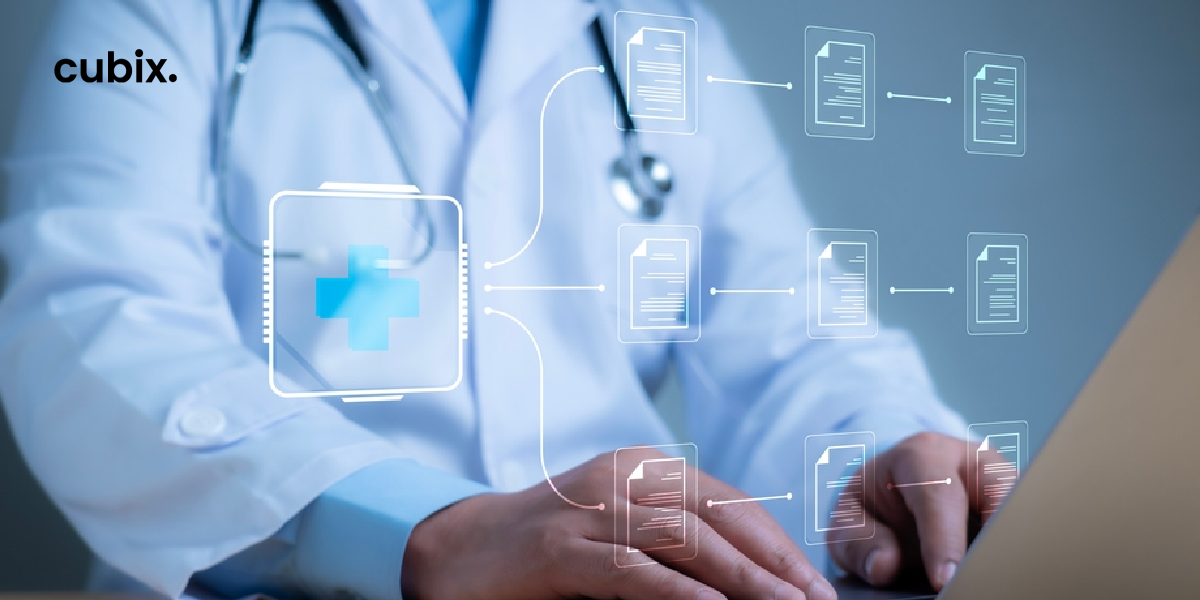A true data-driven healthcare organization is one where all operations and administrative tasks are optimized based on real-time data. This streamlines and smoothens the service delivery process and ensures higher patient satisfaction. How exactly does Big Data help healthcare organizations? And how are big data solutions implemented in a medical institute? This blog will aim to answer this query.
Leveraging Data in Healthcare Operations
The Strategic Significance of Electronic Health Records (EHR) Systems
Systems like Electronic Health Records (EHR), with popular examples being Epic and Cerner, enable the seamless integration and retrieval of patient data. This real-time access ensures immediate and personalized patient care, reducing medical errors and enhancing overall care quality.
Maximizing Returns through Predictive Analytics in Healthcare
Modern Predictive Analytics Platforms, such as IBM SPSS Modeler or RapidMiner, allow healthcare facilities to anticipate evolving trends. By parsing extensive datasets, they can preempt patient inflow, potential disease outbreaks, and even anticipate medical equipment failures, positioning healthcare entities to be agile and responsive.
Empowering the Healthcare Workforce with Data Visualization Tools
Translating data into actionable insights becomes more user-friendly with data visualization tools like Tableau and Power BI. These tools transform intricate datasets into intuitive visuals, enabling even those without a technical background to understand and act on data-driven insights.
Data-Driven Healthcare Administration
Improving Operational Efficiency with Healthcare Analytics
Advanced healthcare analytics platforms, like Health Catalyst and Qlik, shed light on operational bottlenecks. By identifying inefficiencies in staff productivity or the patient journey, they empower administrators to enact specific interventions, enhancing overall operational efficiency.
Optimizing Financial Health with Data-Driven Revenue Cycle Management
Revenue Cycle Management Systems, seen in offerings like Athenahealth and CareCloud, bring efficiency to patient billing and claims tracking. Their ability to reduce billing errors by leveraging data not only ensures accurate patient billing but also enhances the overall financial health of healthcare institutions.
Elevating Patient Experiences through Data-Enhanced Relationships
Data has a big role to play in enhancing patient experiences. In the realm of patient relationship management, platforms like Salesforce Health Cloud stand out. They not only streamline patient interactions but also offer invaluable insights into patient preferences and feedback, allowing healthcare providers to refine their services accordingly.
Future-Proofing with Automation
Robotic Process Automation (RPA) tools, including the likes of UiPath and Blue Prism, have the capacity to revolutionize routine administrative tasks. By automating processes like data entry and appointment scheduling, they usher in an era of reduced errors and expedited service delivery.
Pioneering Digital Transformation in Healthcare with AI and ML Integration
The integration of Artificial Intelligence (AI) & Machine Learning (ML) platforms, such as Google's TensorFlow or Amazon's SageMaker, represents the apex of healthcare's digital evolution. By predicting patient needs, optimizing resource allocation, and even aiding in diagnoses, these platforms signify the untapped potential of precision and personalization in patient care.
Data in Patient Care and Treatment
Big data plays a vital role in enhancing patient experiences by enabling healthcare organizations to identify areas of improvement in their patient journeys. However, an even more profound ripple effect of big data in healthcare is arguably in patient care and treatment. By dissecting a patient's medical trajectory, genetic blueprint, lifestyle habits, and integrating insights from wearable devices, healthcare professionals can curate treatments that resonate with individual needs.
Wearable devices, like smartwatches and fitness trackers, provide real-time health metrics, allowing for more timely and accurate medical interventions. These devices are akin to having a mini-doctor on your wrist, continuously monitoring and offering insights that can be life-saving. This integration of data from wearables empowers medical professionals to switch from assumption-based treatment models to individualized care plans based on accurate information.
Laying the Data Architecture
Data Ingestion Layer
This is the initial layer in the data architecture where raw data from various sources gets collected.
In healthcare, this would involve collecting patient records, test results, medical images, and more from different systems, machines, and databases.
Data Storage Layer
As the name suggests, this layer stores the ingested data securely, ensuring it's available for processing and analysis.
In the realm of healthcare, this means storing comprehensive electronic health records (EHRs), research data, clinical trial results, and other relevant datasets in a structured and secure environment.
Data Processing Layer
Here, data undergoes cleaning, transformation, and other manipulations to prepare it for analysis.
In healthcare data management, this step ensures that patient data is accurate, consistent, and free from errors or redundancies. It might involve standardizing units of measure, correcting data entries, or integrating datasets.
Data Interface Layer
Once data is processed, it is presented to users through various applications for easy analysis and interpretation.
Healthcare professionals can access visual tools like dashboards to review patient statistics, outcomes of treatments, hospital operations data, etc. This allows them to make informed decisions based on real-time or historical data.
Data Pipeline Layer
This underlying layer maintains and manages the consistent flow of data through all the above layers.
Given the continuous influx of patient data and other medical information, this layer ensures seamless data flow. Whether it's moving a patient's test results from a lab system to their EHR or updating real-time bed availability in a hospital, the data pipeline facilitates these transactions efficiently.
Conclusion
Administrative efficiency and operational excellence are objectives every organization strives for and the possibilities big data in healthcare opens up in these areas have a transformative potential. Healthcare organizations can leverage big data to streamline their operations and administration and ultimately improve the quality of their services.
To transform your operations for the better using big data solutions, partner with Cubix – a leading big data development company that has consistently delivered impact-focused solutions and helped businesses grow.

